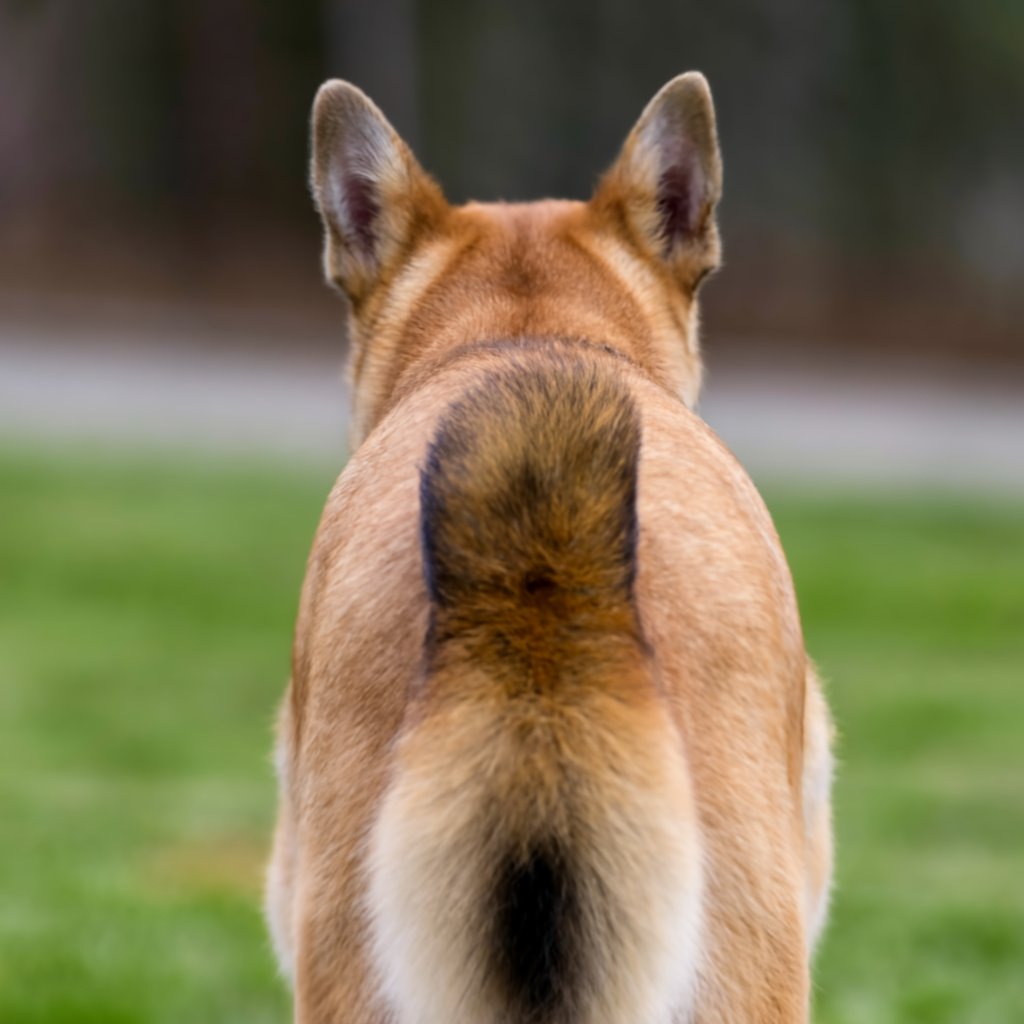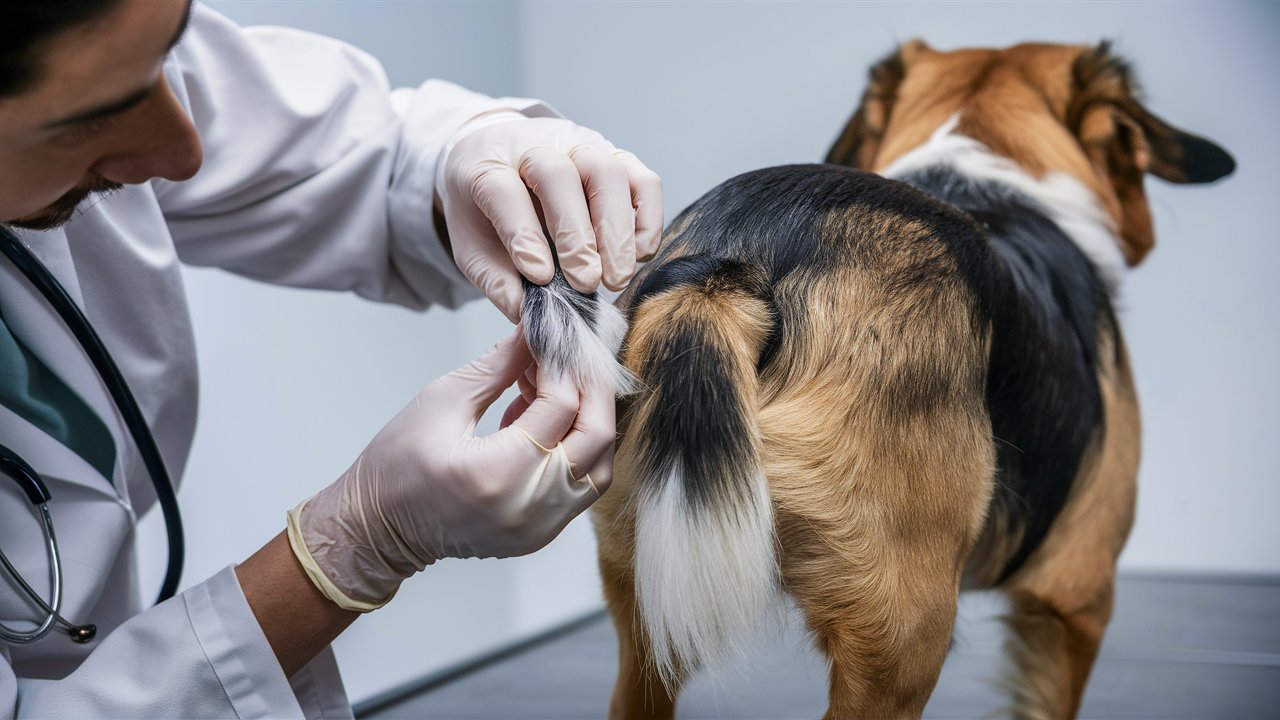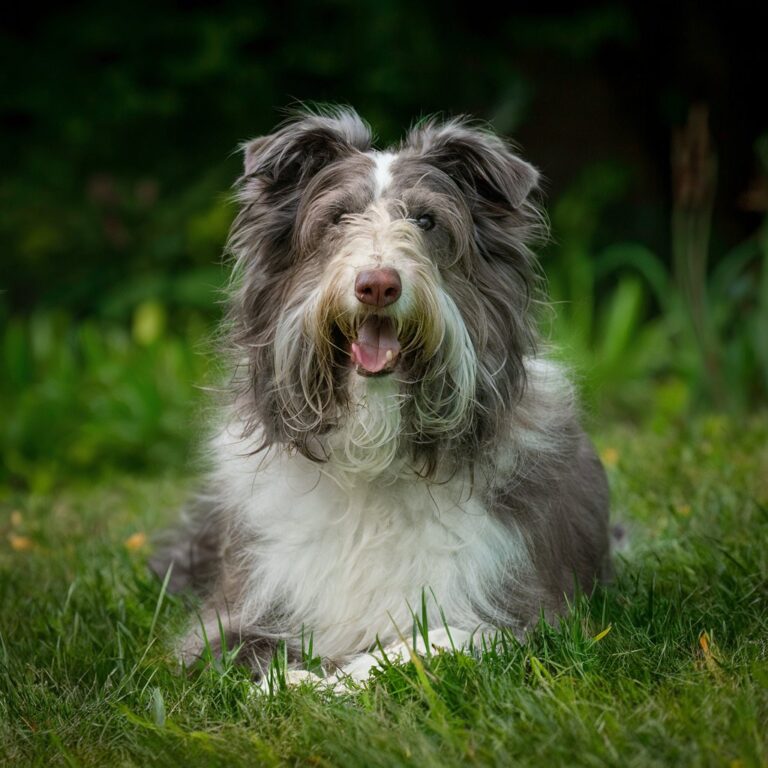Unveiling Stud Tail in Dogs: Symptoms, Etiology, and 100% Effective Treatments
Stud Tail in dogs, medically known as supracaudal gland infection or tail gland hyperplasia, is a condition that affects dogs, particularly those with certain coat types and hormonal profiles. While relatively common, it’s often misunderstood by dog owners. This comprehensive guide aims to shed light on stud tail, covering its causes, symptoms, treatment options, and practical care tips. Through a blend of expert research and personal anecdotes, we’ll explore how this condition manifests, its impact on dogs’ health, and what you can do as a responsible pet owner.
What is Stud Tail in Dogs?

Stud tail in dogs is a dermatological condition primarily affecting the base of a dog’s tail. It involves the hyperactivity or infection of the sebaceous glands, which are responsible for producing oils to keep the skin and coat healthy. This chapter will delve into the anatomy of the tail glands, explaining how they function and why certain breeds or individual dogs are more prone to developing stud tail in dogs.
Causes and Risk Factors in Dogs
Understanding the underlying causes of stud tail is crucial for prevention and effective management. Here, we’ll explore the hormonal factors, such as testosterone levels in intact male dogs, that contribute to gland hyperactivity. We’ll also discuss breed predispositions, coat types, and environmental factors that can exacerbate the condition. Personal stories from dog owners who have dealt with stud tail will provide real-life insights into its onset and progression.
Symptoms and Clinical Presentation in Dogs
Stud tail, also known as supracaudal gland infection or tail gland hyperplasia, presents with a range of symptoms that can vary in severity and manifestation. Understanding these symptoms is crucial for early identification and effective management of the condition. This chapter explores the clinical signs commonly associated with stud tail, providing insights through both scientific descriptions and personal anecdotes from dog owners who have experienced this condition with their pets.
Clinical Signs of Stud Tail in Dogs
Stud tail primarily affects the sebaceous glands located near the base of the tail in dogs. These glands are responsible for producing oily secretions that help maintain the health and waterproofing of the skin and coat. When these glands become hyperactive or infected, various symptoms may appear, including:
- Oily or Waxy Residue: One of the hallmark signs of stud tail is the presence of greasy or waxy material accumulating around the base of the tail. This residue often has a distinctive odor and may feel sticky to the touch. It results from the overproduction of sebum by the affected glands.
- Hair Loss: Stud tail in dogs commonly experience hair loss around the tail base. This can range from mild thinning of fur to more pronounced bald patches. The hair loss is often accompanied by inflammation and irritation of the surrounding skin.
- Inflammation and Redness: The affected area may appear inflamed, with noticeable redness and sometimes swelling. This inflammation is a response to the irritation caused by the excessive secretion of oils and can contribute to discomfort for the dog.
- Scratching and Self-Grooming: Stud tail in dogs may exhibit increased scratching or licking of the tail base in an attempt to relieve itching or discomfort. This behavior can exacerbate the condition and may lead to secondary skin infections if not addressed promptly.
- Secondary Infections: In severe cases or when left untreated, stud tail can predispose the affected area to secondary bacterial or fungal infections. These infections can further aggravate symptoms and may require additional veterinary intervention.
Variability in Symptoms Across Breeds and Individuals
While the clinical signs described above are commonly associated with stud tail in dogs, their severity and presentation can vary widely among different dog breeds and individual animals. For instance, dogs with denser coat types or those predisposed to higher testosterone levels, such as intact males or certain breeds, may be more prone to developing pronounced symptoms.
Personal Anecdotes and Real-Life Experiences
To provide a deeper understanding of how stud tail manifests in real-life scenarios, let’s consider the experiences of dog owners who have encountered this condition with their pets:
- Case Study 1: “Milo, my Golden Retriever, developed stud tail when he was about two years old. At first, I noticed a greasy patch near his tail, and over time, his fur started thinning in that area. He seemed uncomfortable and kept licking it. After consulting our vet, we started a treatment plan that included medicated shampoos and dietary changes. It took a few weeks, but with consistent care, Milo’s symptoms improved significantly.”
- Case Study 2: “Lucy, our Bulldog, had recurrent issues with stud tail despite regular grooming. Her tail base would become red and swollen, and she would scratch incessantly. Our vet recommended a combination of topical treatments and adjusting her diet to reduce inflammation. It’s been a challenge managing it, but understanding her triggers has helped us keep her symptoms under control.”
Diagnosis and Veterinary Considerations Stud Tail in Dogs

Diagnosing stud tail in dogs requires a systematic approach that combines clinical evaluation with veterinary expertise. This chapter explores the diagnostic process in detail, emphasizing the importance of accurate identification for effective treatment and management.
Understanding Diagnostic Criteria
The diagnosis of stud tail in dogs begins with a thorough physical examination by a veterinarian. Key diagnostic criteria include:
- Clinical Observation: The veterinarian will inspect the tail base for signs of inflammation, hair loss, and the characteristic oily or waxy buildup associated with stud tail in dogs.
- Patient History: Gathering information about the dog’s breed, age, gender, and medical history helps in understanding predisposing factors and ruling out other potential causes of tail base abnormalities.
- Symptom Analysis: Detailed examination of the tail gland area to assess the severity of symptoms such as swelling, redness, and discharge helps in determining the extent of gland hyperactivity.
- Differential Diagnosis: Stud tail in dogs must be differentiated from other conditions affecting the tail base, such as infections, allergies, and hormonal imbalances. This may involve additional tests or procedures to confirm the diagnosis.
Diagnostic Tests and Procedures
In some cases, diagnostic tests may be necessary to confirm the diagnosis of stud tail in dogs or rule out other underlying conditions:
- Skin Scraping: A scraping of the affected area may be examined under a microscope to check for the presence of mites or fungal infections, which can mimic symptoms of stud tail in dogs.
- Cytology: Sampling of the discharge or oily residue from the tail base can provide valuable insights into the type of cells present and help in identifying bacterial or yeast infections.
- Biopsy: In rare instances where the diagnosis is unclear or if there are concerns about underlying skin conditions, a biopsy of the affected skin may be recommended. This involves taking a small sample of tissue for microscopic examination.
- Hormonal Testing: Since stud tail in dogs is often linked to hormonal imbalances, particularly elevated testosterone levels in intact male dogs, hormonal testing may be advised to assess these levels and guide treatment decisions.
Veterinary Expertise and Consultation
The involvement of a qualified veterinarian is crucial for accurate diagnosis and management of stud tail in dogs:
- Specialized Knowledge: Veterinarians with expertise in dermatology or endocrinology can provide specialized insights into the hormonal and dermatological aspects of stud tail in dogs.
- Case Studies and Experience: Drawing from case studies and personal experiences, veterinarians can offer practical advice on tailoring treatment plans to individual dogs’ needs.
- Treatment Planning: Based on the diagnostic findings, veterinarians can develop a customized treatment plan that may include topical therapies, hormonal management, dietary adjustments, or a combination of approaches.
Importance of Regular Veterinary Check-ups
Once diagnosed, regular follow-up appointments are essential to monitor progress and adjust treatment as needed:
- Monitoring Response to Treatment: Regular check-ups allow veterinarians to assess how well the dog is responding to treatment and make necessary adjustments.
- Preventive Care: Veterinary visits also provide an opportunity for preventive care measures, such as skin health assessments and guidance on long-term management strategies.
Treatment Options

Effective treatment of stud tail in dogs requires a tailored approach that addresses the underlying causes and severity of the condition. From conventional veterinary treatments to holistic and alternative therapies, this chapter explores the range of options available to manage and alleviate stud tail symptoms in your canine companion.
Medical Management
Medical management of stud tail in dogs typically involves addressing the underlying hormonal imbalances and reducing glandular hyperactivity. Veterinarians may prescribe topical treatments such as medicated shampoos or ointments containing antibacterial agents to alleviate inflammation and control excessive oil production. These treatments aim to cleanse the affected area and promote healing of the skin around the tail base.
In cases where hormonal factors play a significant role, veterinarians may recommend hormonal therapy to regulate testosterone levels in intact male dogs. This approach helps to normalize glandular activity and reduce the recurrence of stud tail episodes. Regular monitoring and adjustment of hormone therapy are essential to ensure its effectiveness and minimize potential side effects.
Surgical Options
For severe or recurrent cases of stud tail in dogs, surgical intervention may be considered. Surgical procedures typically involve excising the affected tail gland or glands to prevent further inflammation and infection. This approach is often recommended when conservative treatments have been ineffective or when there is a risk of complications such as abscess formation or chronic skin irritation.
Surgical removal of the tail glands requires careful consideration of the dog’s overall health and the potential impact on tail function and cosmetic appearance. Veterinarians will discuss the benefits and risks of surgery with pet owners to make informed decisions about the best course of action for their dog’s long-term health and well-being.
Holistic and Alternative Therapies
In addition to conventional medical treatments, holistic and alternative therapies can complement the management of stud tail in dogs. Dietary modifications, such as reducing fatty acids in the diet or adding supplements rich in omega-3 fatty acids, may help to support skin health and reduce glandular inflammation. Herbal remedies with anti-inflammatory properties, such as calendula or chamomile, can be applied topically to soothe irritated skin and promote healing.
Acupuncture and massage therapy are non-invasive techniques that may help to alleviate discomfort and reduce stress in dogs with stud tail. These holistic approaches focus on restoring balance to the body’s energy pathways and promoting overall well-being, which can contribute to improved skin health and immune function over time.
Lifestyle Adjustments
Preventive care and lifestyle adjustments play a crucial role in managing stud tail and reducing the likelihood of recurrence. Regular grooming practices, including gentle cleaning of the tail base with mild, non-irritating cleansers, can help to remove excess oil and debris that contribute to glandular inflammation. Maintaining a balanced diet that supports skin health and immune function is also essential for preventing hormonal imbalances and minimizing the risk of stud tail development.
Environmental factors, such as humidity and exposure to allergens or irritants, should be taken into consideration when managing stud tail in dogs. Providing a clean and comfortable living environment, free from potential triggers of skin inflammation, can help to promote healing and reduce the frequency of stud tail episodes.
Personal Anecdotes and Case Studies
Personal anecdotes from dog owners who have navigated the challenges of managing stud tail in their pets can provide valuable insights and encouragement to readers facing similar experiences. Stories of successful treatment outcomes and strategies for coping with chronic stud tail can offer reassurance and practical tips for optimizing your dog’s care regimen.
Preventive Care and Lifestyle Adjustments

Preventing stud tail in dogs involves proactive care strategies that address the underlying causes of gland hyperactivity and promote overall skin health. By understanding your dog’s unique needs and making informed lifestyle adjustments, you can significantly reduce the risk of developing this condition. This chapter explores practical tips and personalized anecdotes to empower dog owners in providing optimal preventive care for stud tail.
Understanding the Role of Grooming
Proper grooming practices are essential in preventing stud tail. Regular grooming not only keeps your dog’s coat clean and manageable but also helps distribute natural oils produced by the skin’s sebaceous glands more evenly. This reduces the likelihood of gland blockages and subsequent inflammation. For breeds prone to stud tail, such as those with dense or oily coats, frequent but gentle brushing around the tail base can help maintain gland health.
Personal Anecdote: Sarah, a Labrador Retriever owner, noticed that regular brushing around her dog’s tail base helped keep stud tail symptoms at bay. By incorporating this into her weekly grooming routine, she minimized oil buildup and skin irritation, ensuring her dog’s comfort.
Dietary Considerations
A balanced diet plays a crucial role in skin health and can influence gland function. Ensure your dog’s diet includes essential fatty acids, such as omega-3 and omega-6, which support healthy skin and coat. Avoid excessive fat intake, as this can contribute to gland hyperactivity. Consult with your veterinarian to choose a diet appropriate for your dog’s breed, age, and activity level, considering any specific nutritional needs related to gland health.
Personal Anecdote: Jake, a Border Collie owner, switched his dog to a diet rich in omega fatty acids after consulting with his veterinarian about stud tail concerns. Within weeks, he noticed a significant improvement in his dog’s skin condition and reduced instances of gland inflammation.
Environmental Modifications
Environmental factors, such as humidity and temperature, can affect gland activity and skin health. Create a comfortable living environment for your dog, ensuring adequate ventilation and cleanliness to prevent bacterial growth that may exacerbate stud tail. Provide a dry and clean resting area, particularly for dogs prone to spending time outdoors or in humid conditions, to minimize moisture buildup around the tail base.
Personal Anecdote: Lisa, who owns a Golden Retriever living in a tropical climate, installed a fan in her dog’s sleeping area to improve air circulation and reduce humidity levels. This simple adjustment helped mitigate stud tail flare-ups during hot and humid seasons.
Hormonal Regulation
For intact male dogs, hormonal fluctuations, particularly elevated testosterone levels, can contribute to gland hyperactivity and stud tail in dogs development. Consider neutering your dog as a preventive measure, as this can reduce testosterone levels and diminish the likelihood of gland inflammation. Discuss the timing and potential benefits of neutering with your veterinarian to make an informed decision based on your dog’s health and breed considerations.
Personal Anecdote: Mark, the owner of a German Shepherd, opted to neuter his dog after discussing the benefits of hormone regulation with his veterinarian. Following the procedure, he noticed a significant decrease in gland inflammation and a more manageable coat condition.
Regular Veterinary Check-ups
Routine veterinary examinations are essential in monitoring your dog’s overall health, including skin condition and gland function. Schedule regular check-ups to detect early signs of stud tail or other dermatological issues, allowing for prompt intervention and treatment. Your veterinarian can provide personalized advice on preventive care based on your dog’s health history and individual needs.
Personal Anecdote: Emily, whose Shih Tzu had recurrent stud tail episodes, established a biannual check-up routine with her veterinarian. Regular monitoring enabled early detection of gland irregularities and adjustments to her dog’s preventive care plan, ensuring ongoing management of the condition.
Living with Stud Tail: Long-term Management

Prone to recurring stud tail in dogs or those with chronic conditions, long-term management is essential. This chapter will discuss ongoing care strategies, including regular veterinary check-ups, monitoring for recurrence, and adjusting treatment protocols as needed. Personal narratives from dog owners navigating the challenges of chronic stud tail will provide encouragement and insights into maintaining quality of life for affected pets.
7.1 Monitoring and Regular Veterinary Check-ups
Regular monitoring of your dog’s tail base and overall skin health is crucial for catching any signs of stud tail recurrence early. Veterinarians recommend periodic check-ups to assess gland activity, skin condition, and to adjust treatment plans as necessary. Personal anecdotes can illustrate how diligent monitoring has helped owners prevent flare-ups or manage chronic stud tail effectively.
7.2 Dietary Management and Nutritional Support
Nutrition plays a vital role in skin health and gland function. This section will explore dietary adjustments that may benefit dogs prone to stud tail, such as omega-3 fatty acids for their anti-inflammatory properties or balanced diets that support overall skin health. Personal stories can highlight the impact of dietary changes on managing or preventing stud tail in specific breeds or individual dogs.
7.3 Environmental Considerations
Environmental factors, such as humidity levels and exposure to allergens or irritants, can influence gland activity and skin health. Tips on creating a comfortable living environment for your dog, including appropriate grooming practices and choosing suitable bedding materials, can be invaluable. Personal anecdotes can share how environmental adjustments have helped reduce the frequency or severity of stud tail episodes.
7.4 Behavioral and Stress Management
Stress can exacerbate skin conditions like stud tail. Strategies for reducing stress in your dog’s life, such as providing routine, exercise, and mental stimulation, can contribute to overall well-being. Personal stories from owners who have implemented stress-reduction techniques may resonate with readers facing similar challenges.
7.5 Supportive Care and Holistic Approaches
In addition to conventional treatments, holistic approaches like acupuncture, herbal remedies, or alternative therapies may complement veterinary care for some dogs with stud tail. Case studies or personal anecdotes can explore how integrative approaches have supported overall health and comfort in dogs with chronic stud tail.
Conclusion
Stud tail may be a manageable condition with proper understanding and care. By blending scientific knowledge with personal experiences, this article aims to equip dog owners and enthusiasts with the tools they need to recognize, treat, and prevent stud tail effectively. Remember, every dog is unique, and personalized care plays a crucial role in ensuring your furry companion’s well-being and happiness.
References and Further Reading
For readers interested in delving deeper into stud tail and related topics, this section will provide a curated list of authoritative resources, including academic studies, veterinary websites, and community forums where experiences and insights are shared.





